Confused between vegetable-tanned leather and so-called vegan alternatives? Below you’ll find a science-backed guide that explains the tanning process, environmental impact and why CP Slippers chooses plant-based tannins for timeless comfort.
Table of Contents
- What Is Vegetable Tanning?
- Is It Vegan?
- Step-by-Step Tanning Process
- Veg Tan vs Chrome Tan vs Vegan PU/PVC
- Benefits for Slipper Lovers
- Ethical & Environmental Considerations
- Care Tips to Make Them Last
- FAQs
1. What Is Vegetable Tanning?
Vegetable tanning is the oldest leather-preservation method, dating back at least 5 000 years. Instead of chromium salts, artisans use natural tannins extracted from oak, mimosa or chestnut bark to stabilize the hide’s collagen fibres.
2. Is Vegetable-Tanned Leather Vegan?
Short answer: no. While the tanning agents are 100 % plant-based, the substrate is still an animal by-product from the food industry; therefore it doesn’t meet vegan criteria.
However, unlike many “vegan leathers” made from polyurethane (PU) or polyvinyl chloride (PVC), veg-tan uses zero fossil-fuel plastics and is biodegradable under industrial composting conditions.
3. How the Vegetable Tanning Process Works
- Selection & Soaking: Hides are re-hydrated and cleaned.
- Liming & Fleshing: Non-fibrous tissue is removed.
- Pre-Tannage: Hides rest in progressively stronger tannin baths for 20–30 days.
- Drying & Conditioning: Water is slowly evaporated to lock tannins into fibres.
- Finishing: Natural oils and waxes are applied for softness; no synthetic top-coats are needed.
4. Veg Tan vs. Chrome Tan vs. Vegan PU/PVC
| Factor | Veg-Tan | Chrome-Tan | PU/PVC “Vegan” |
|---|---|---|---|
| Chemicals | Plant tannins | Hexavalent chromium | Petro-plastics |
| Process Time | 20–30 days | 1 day | Hours |
| Biodegradability | High | Low | Very Low |
| Patina | Rich, unique | Minimal change | Peels/cracks |
| Water Pollution | Low | High (Cr VI) | Micro-plastics |
| Longevity | Decades | 5–10 yrs | 2–5 yrs |
Chromium-VI from poorly treated chrome effluent is linked to respiratory disease and birth defects. By contrast, veg-tan wastewater contains biodegradable polyphenols.
5. Why Vegetable-Tanned Leather Is Perfect for Slippers
- Durability: Dense fibre structure resists cracking; expected life ≥ 15 years with care.
- Natural Patina: Colour deepens over time, creating “one-of-one” character.
- Breathability: Open pores wick moisture—ideal for barefoot wear.
- Hypoallergenic: No chrome residues that can trigger dermatitis.
- Repairable & Compostable: Scratches can be conditioned; end-of-life fibres biodegrade.
6. Ethical & Environmental Footprint
CP Slippers sources hides that are certified by the Leather Working Group’s Gold-Rated tanneries and tanned with FSC-certified chestnut bark in Spain. This keeps supply chains transparent and supports heritage craft jobs. Our leather is a by-product of the EU meat industry, so no additional animals are raised for skins.
Veg-Tan vs. “Vegan” Marketing Claims
Plant-based “leathers” made from cactus, pineapple or mycelium are promising but remain niche and often laminated with PU for durability, limiting recyclability.
7. Care Tips to Extend Lifespan
- Brush off dust weekly with a soft cloth.
- Nourish every 3 months with HappyPatina Leather Care Products.
- Air-dry away from radiators; avoid soaking.
- Store with cedar inserts to absorb odour.
8. FAQs
Does vegetable-tanned leather smell?
Yes—an earthy, woodsy scent that fades as the leather acclimates.
Can I dye it at home?
Veg-tan readily accepts natural dyes, but always test a hidden area first.
Will rain ruin my slippers?
Light showers are fine; let them dry naturally and apply conditioner.
Walk the Natural Way
Experience the comfort of full-grain vegetable-tanned leather slippers handcrafted in Spain.


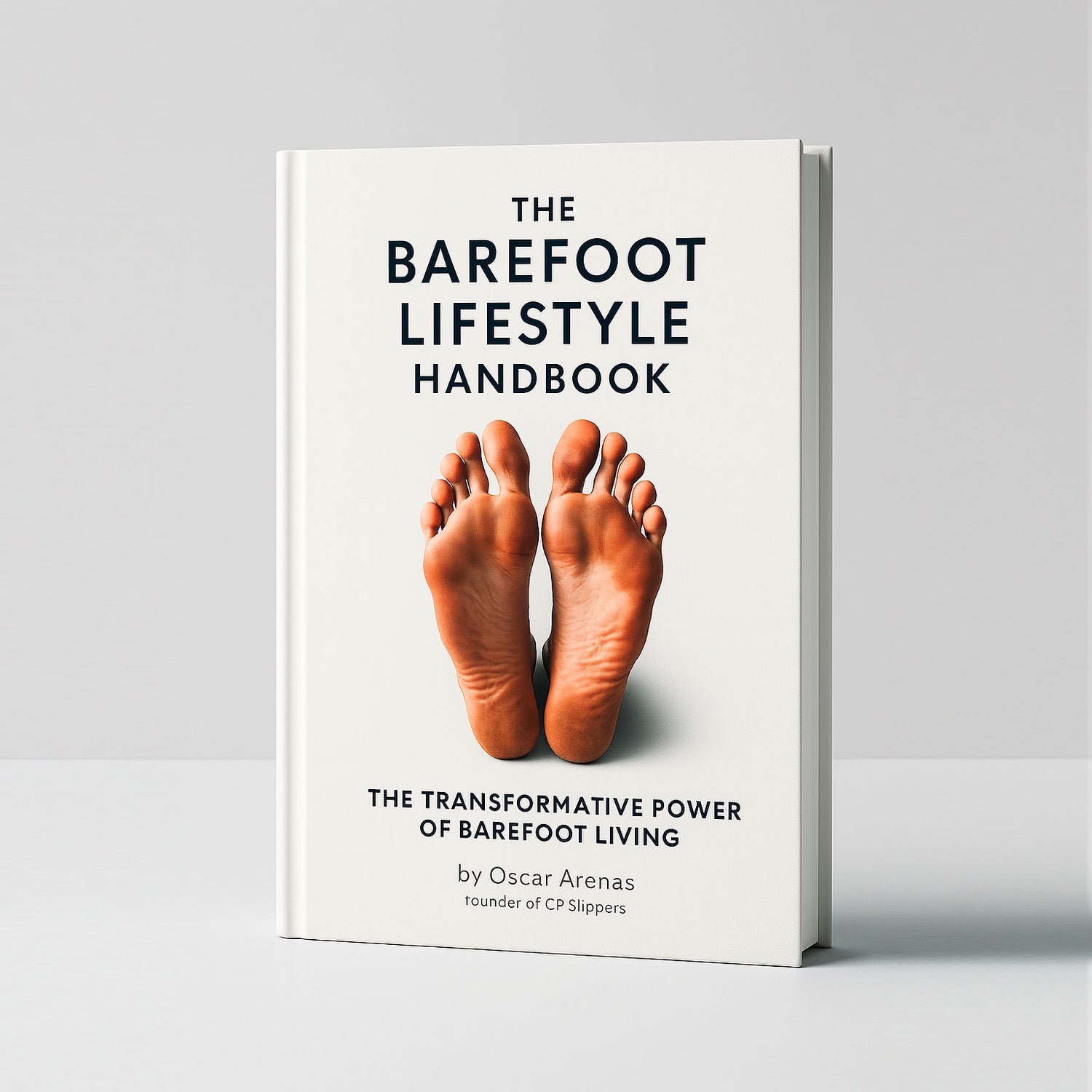
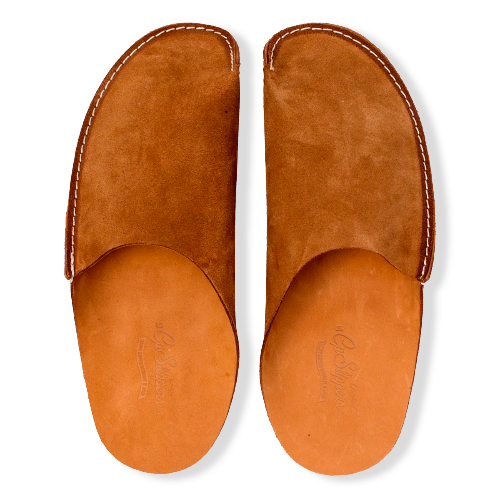
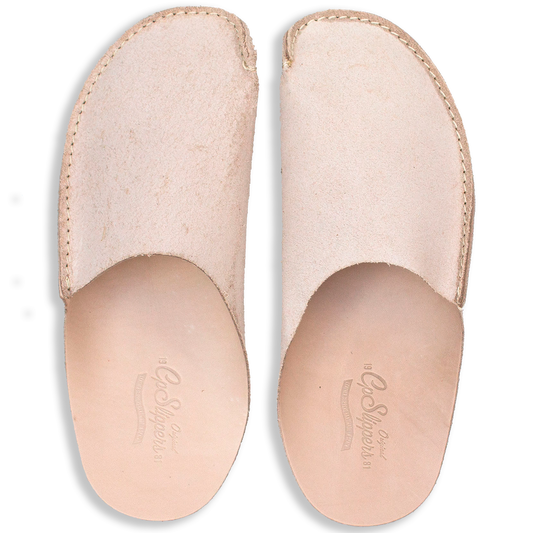
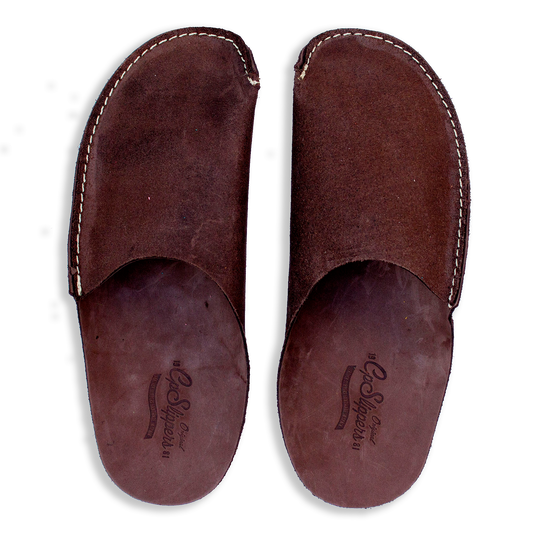
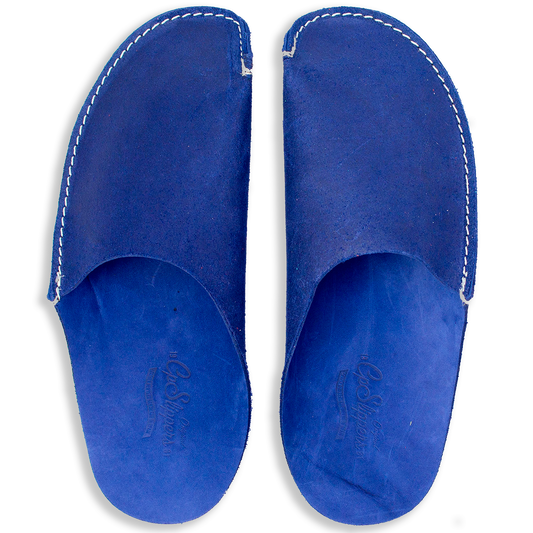
3 comments
Is nappa leather , real lamb skin processed animal leather, which ate being used for recliner sofas by reputed brands in furniture line.
Pl advise
Lovely article, I thought veg tanning took a long long time, you proved my thoughts
This was really informative. Thanks!